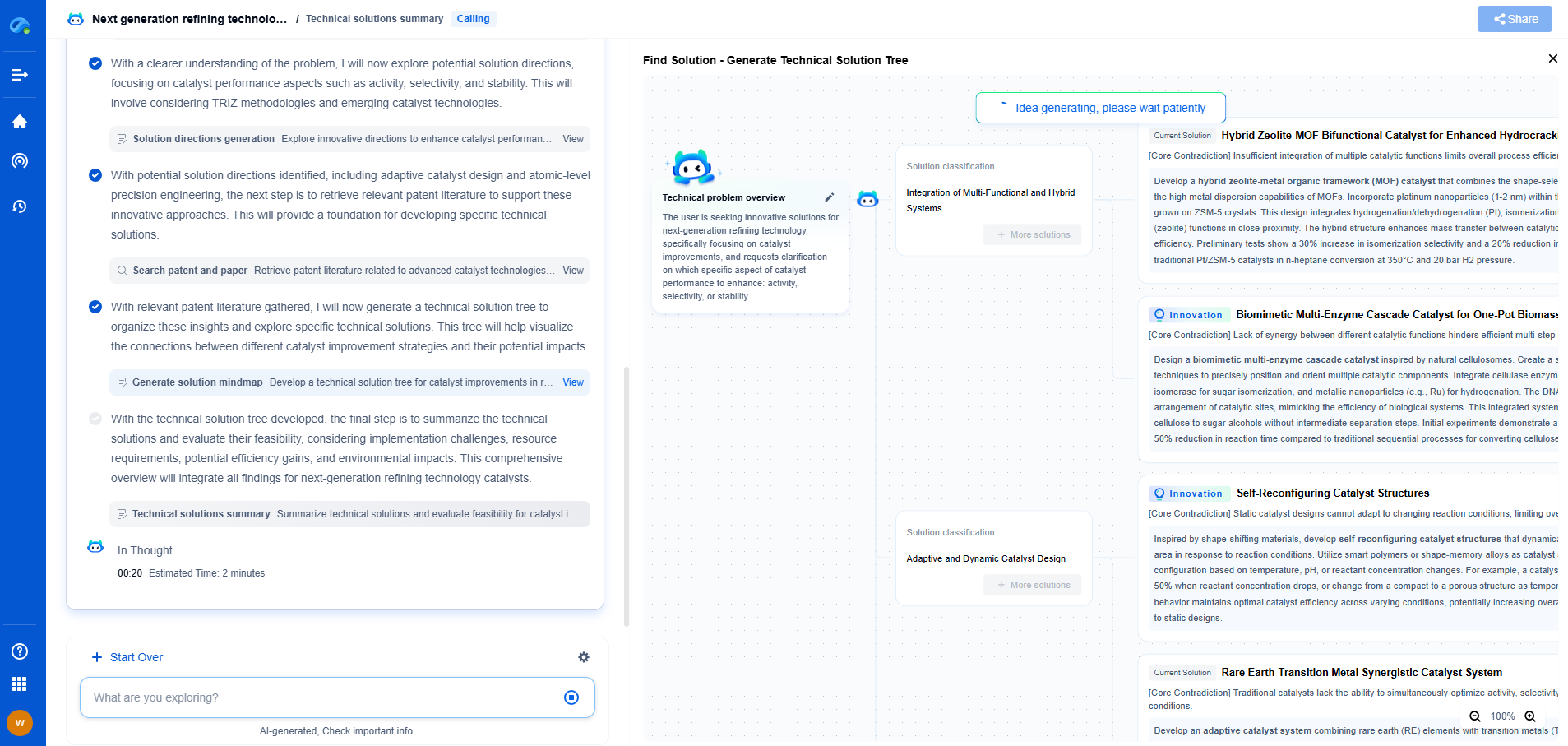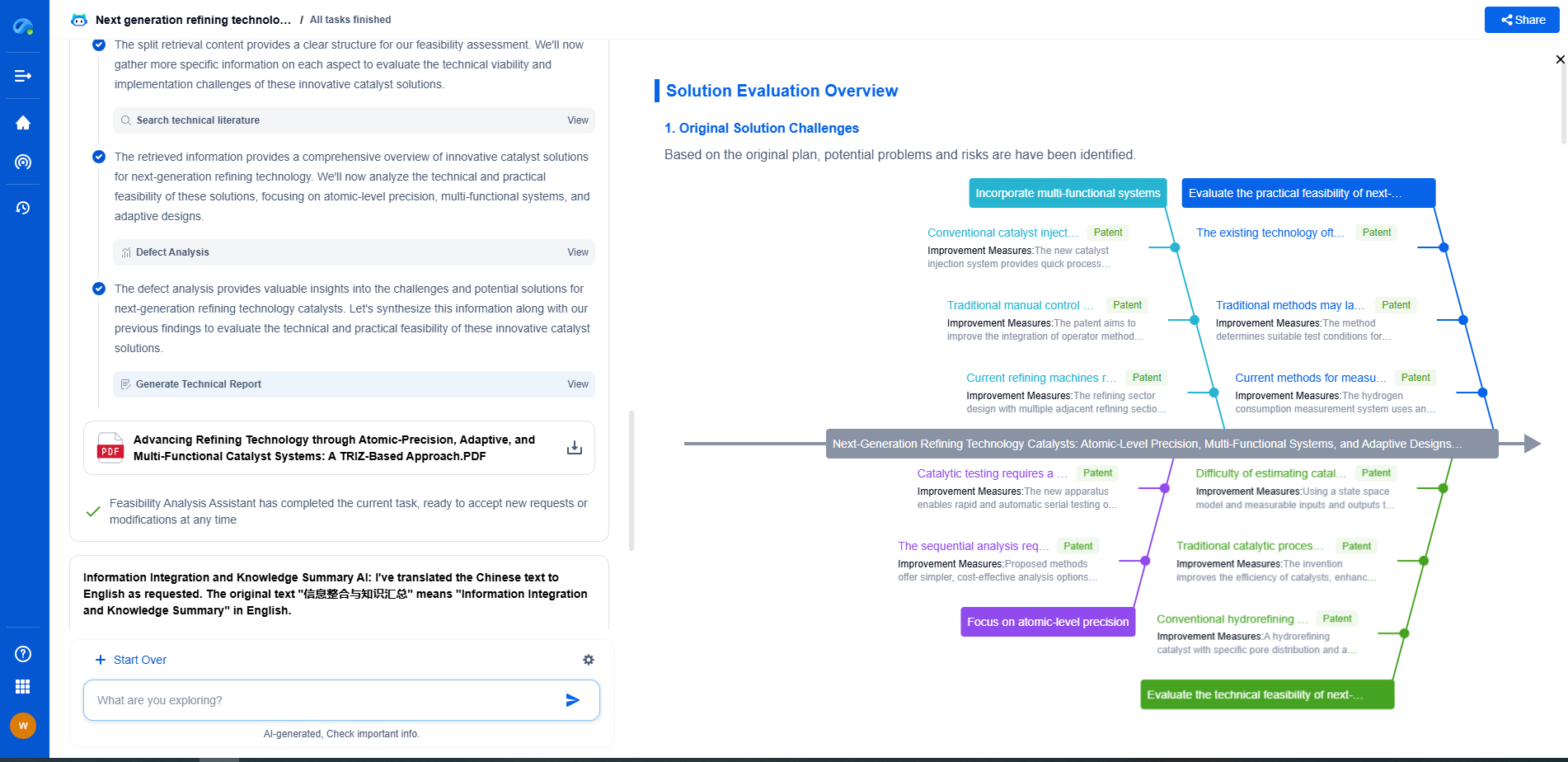Smart Sensors vs. Traditional RTUs: Cost-Benefit Analysis
JUN 20, 2025 |
In today's rapidly evolving technological landscape, the choice between smart sensors and traditional Remote Terminal Units (RTUs) for monitoring and control systems is becoming a significant consideration for industries. Both options offer unique benefits, but understanding their cost implications and overall efficiency is crucial for making an informed decision. This article delves into a comprehensive cost-benefit analysis of smart sensors versus traditional RTUs, providing insights to guide your selection process.
Understanding Smart Sensors and Traditional RTUs
To begin with, it's essential to delineate what each technology entails. Smart sensors are advanced devices capable of not only sensing environmental data but also processing and communicating this data wirelessly to central systems. They are often equipped with integrated microprocessors, wireless communication capabilities, and sometimes even artificial intelligence for advanced data analysis.
On the other hand, traditional RTUs are devices used in industrial applications to collect data from sensors and send it to supervisory systems for monitoring and control. RTUs are generally more robust with hardwired connections and have been a staple in industrial automation for decades.
Cost Implications
Initial Investment
Smart Sensors: The initial cost of deploying smart sensors can be higher due to their advanced technology and integrated systems. They require an upfront investment in both hardware and compatible software platforms for data processing and management.
Traditional RTUs: The initial cost for traditional RTUs tends to be lower, as they use simpler technology and well-established systems. RTUs can be more cost-effective for companies with pre-existing infrastructures that require minimal upgrades or adjustments.
Operational Costs
Smart Sensors: These devices typically offer lower operational costs in the long term. With their energy-efficient designs and reduced need for manual intervention, smart sensors can significantly decrease labor and maintenance expenses. Their ability to predict and prevent system failures can also lead to cost savings by minimizing downtime and repair costs.
Traditional RTUs: Operational costs for RTUs can be higher over time due to their need for regular maintenance, manual data collection, and higher energy consumption. Additionally, any system expansions or upgrades could demand further financial investment.
Benefits of Smart Sensors
Enhanced Data Accuracy and Real-Time Insights
Smart sensors provide precise data with high resolution and frequency, offering real-time insights that traditional RTUs might not deliver as effectively. The ability to process data at the source can lead to more accurate and timely decision-making.
Scalability and Flexibility
Smart sensors are easily scalable and adaptable to changing environments and requirements. They can be integrated into various systems without the need for extensive rewiring, making them suitable for dynamic industries.
Reduced Infrastructure Requirements
With wireless communication, smart sensors eliminate the need for complex wiring and cabling, reducing both physical clutter and installation costs. Their compact design allows for deployment in areas with space constraints.
Benefits of Traditional RTUs
Proven Reliability and Durability
Traditional RTUs have a long-standing track record of reliability in harsh industrial environments. Their robust design ensures durability, making them a dependable choice for industries with high-stress conditions.
Integration with Existing Systems
RTUs are often easier to integrate with existing infrastructure, especially in industries where legacy systems are prevalent. This can lead to reduced disruption during the transition phase and lower training requirements for personnel.
Security and Stability
RTUs, with their wired connections, provide a stable and secure communication pathway. This can be a critical factor in industries where data security and integrity are paramount.
Conclusion
Choosing between smart sensors and traditional RTUs involves a careful assessment of both financial and operational factors. Smart sensors present a more modern, flexible solution with potentially lower long-term costs and advanced features, while traditional RTUs offer reliability, ease of integration, and proven durability. Ultimately, the decision should align with the specific needs, infrastructure, and future goals of your organization. By considering the cost-benefit analysis provided, you can make a well-informed choice that supports your operational efficiency and technological advancement.
Transform the Way You Innovate in Pipeline Technology—with AI-Powered Intelligence
From corrosion-resistant materials to smart monitoring systems and advanced flow control mechanisms, the pipeline industry is undergoing rapid technological transformation. Yet keeping up with evolving engineering solutions, regulatory landscapes, and competitive patents can be a major bottleneck for R&D and IP teams.
Patsnap Eureka is your AI-powered research companion—built specifically for professionals in high-tech and infrastructure domains like pipeline technology. Whether you're designing high-pressure transport systems, assessing trenchless installation innovations, or safeguarding proprietary flow assurance solutions, Eureka provides real-time insights into global patent trends, emerging technologies, and R&D intelligence—all in one intuitive interface.
Empower your team to innovate faster, reduce technical blind spots, and stay ahead of industry shifts. Discover Patsnap Eureka today and bring clarity and confidence to your pipeline technology decisions.
- R&D
- Intellectual Property
- Life Sciences
- Materials
- Tech Scout
- Unparalleled Data Quality
- Higher Quality Content
- 60% Fewer Hallucinations
Browse by: Latest US Patents, China's latest patents, Technical Efficacy Thesaurus, Application Domain, Technology Topic, Popular Technical Reports.
© 2025 PatSnap. All rights reserved.Legal|Privacy policy|Modern Slavery Act Transparency Statement|Sitemap|About US| Contact US: help@patsnap.com

